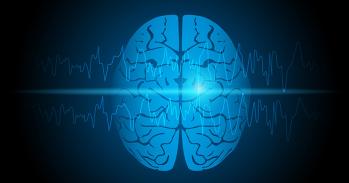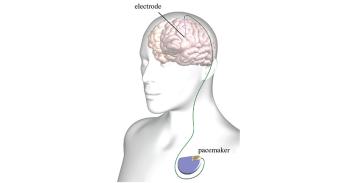OCD can be a devastating condition: therapy and medication often doesn’t work, leaving many people unable to hold down a job or a relationship – or even to leave their house. In our series of films, science writer David Adam looks at how research at Cambridge using animals helps us understand what is happening in the brain – and may lead to better treatments.
OCD can be a devastating condition: therapy and medication often doesn’t work, leaving many people unable to hold down a job or a relationship – or even to leave their house. In our series of films, science writer David Adam looks at how research at Cambridge using animals helps us understand what is happening in the brain – and may lead to better treatments.
When David Adam was just 18, a teasing comment from a university friend triggered a series of thoughts that he had contracted HIV and would die of AIDS. This was around the time of peak hysteria about this new disease, but even so, his thoughts represented more than the worries of a naïve, newly-sexually active young man: the fear was unshakeable and the thoughts consumed him, dominating his life.
For a long time, David remained silent about his obsession, afraid to tell anyone what he was going through. It was only a couple of decades later, when the thoughts began to affect his relationship with his young daughter, to whom he was sure he would transmit his ‘infection’, that he sought help. He was subsequently diagnosed with obsessive compulsive disorder (OCD).
OCD is sometimes viewed as a personality quirk – “I’m a little bit OCD,” people will say as they carefully arrange the books on their shelf. The truth is far more devastating. People living with OCD will scrub their hands compulsively, often with bleach, till they are bleeding. Others will check that they have locked the back door thirty, forty times – otherwise, they are sure a family member will come to harm - making going out almost impossible.
David, a journalist and science writer, has written and spoken extensively about his condition. He considers himself fortunate: his condition is under control, thanks to a combination of ‘talking therapies’ and medication. Others are not so fortunate: despite intensive therapy and medication, they are still unable to hold down a job or a relationship, so dominant are their OCD behaviours.
Now, in a series of short films for the University of Cambridge, David has visited leading researchers who study OCD and asks what we know about the underlying biology that leads to the condition: just what is going on in the brain?
In the films, Professor Trevor Robbins, Head of Psychology at Cambridge, introduces David to scientists who use a combination of studies to explore the inner workings of the brain. These include studies involving rats and marmosets (small monkeys), as well as people.
One of the studies is a so-called ‘reversal learning’ test. In this test, the marmoset learns that pressing one button gives it a juice reward, while it gets no reward if it presses a second button. But then, unexpectedly, the buttons swap: how good is the marmoset at changing its thinking to adjust to this new information? A common trait in people with OCD is a tendency to have rigid, obsessive thinking that dominates their behaviour.
By manipulating localised regions of the animals’ brains, either permanently or via temporary drug infusions, scientists are able to understand better the exact pathways within the brain that malfunction in OCD and cause this rigid behaviour. As Professor Robbins explains, this would not be possible in human studies. But this knowledge will help underpin the development of new, more effective treatments – and this is crucial, as around 60% of patients with OCD do not respond to existing treatments.
The films have been produced as part of the University of Cambridge’s commitment to openness on animal research. In 2014, the University announced that it had signed the Concordat on Openness on Animal Research. The following year, it launched its first film on the subject, Fighting Cancer: Animal research at Cambridge.
We welcome comments about this article. However, as with discussions on all of our news and feature pages, comments will be moderated so please do not post contributions that are offensive or contain profanities, and please stay on topic. We do not moderate comments in real-time so there may be a delay before they appear.

The text in this work is licensed under a Creative Commons Attribution 4.0 International License. For image use please see separate credits above.




